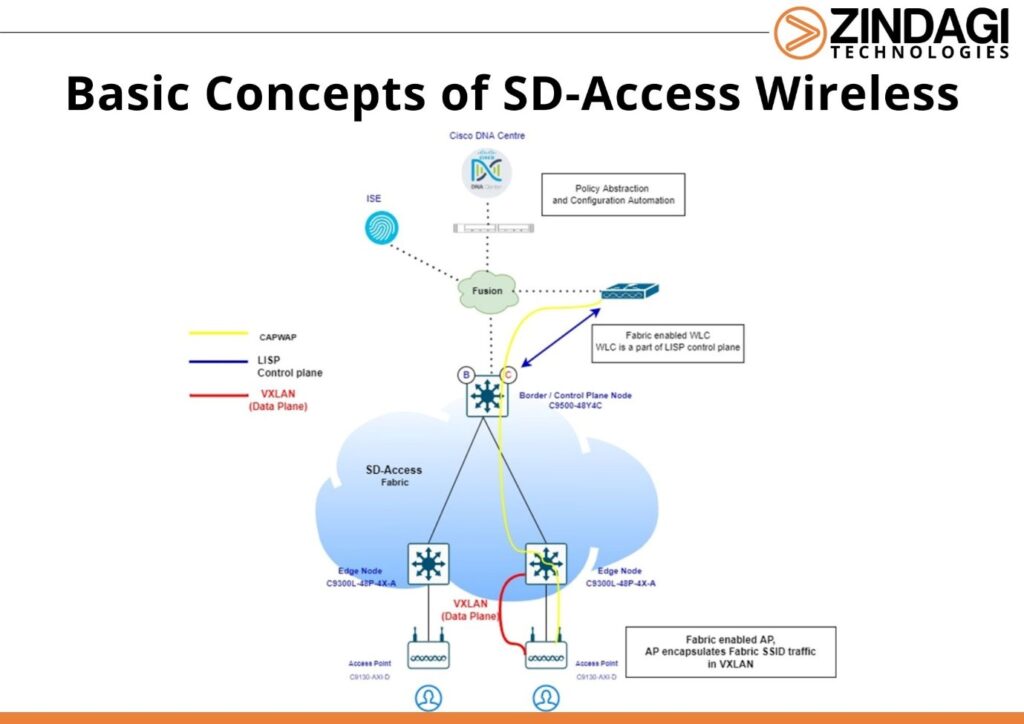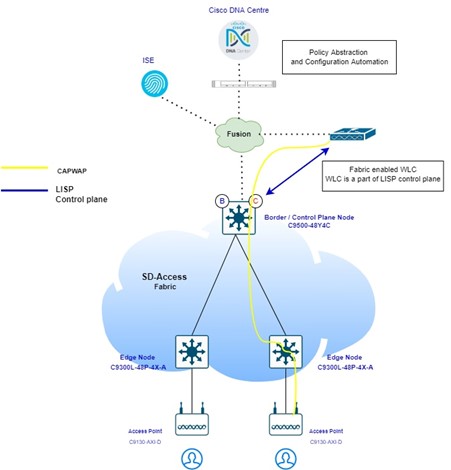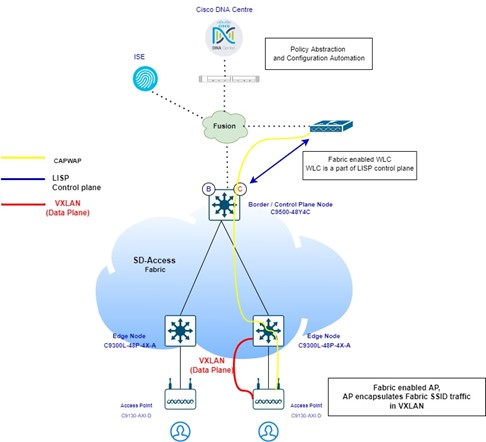What are the Basic Concepts of SD-Access Wireless?

In this blog, we are going to discuss SD-Access Wireless. You can also refer to the LISP understanding that is used in SD-Access as a control plane.
The SD-Access Wireless architecture provides the following three things:
- Simplifying the Control & Management Plane
- Optimizing the Data Plane
- Integrating Policy & Segmentation E2E
We will talk about these things in detail in the below section.
Simplifying the Control & Management Plane
The below section explains how SD-Access simplifies the control plane. The following devices will be responsible for simplifying the Control & Management plane:
- Cisco DNA Centre for Automation: The Cisco DNA Centre play a major role in automation. It simplifies the fabric deployment. It helps us to deploy the fabric which includes wireless control and access-point and will help to provision, discover, the configuration, troubleshoot, and the monitoring from the DNA Centre.
- WLC for Centralized Wireless Control Plane: In the SD-Access wireless architecture, the fabric WLC provide the centralized wireless control plane. The AP management, the AP provisioning, mobility of end clients, all these things will be managed by WLC.
- Control Plane Node for LISP Control Plane Management: In SD-Access wireless architecture, the LISP control plane management is added. The WLC will integrate with the LISP control plane node. The WLC will update the Control Plane node about the wireless end-clients info.
The AP will send all the connected end-clients detail through CAPWAP to the fabric-enabled WLC. The WLC will share those details with the Control plane node with the edge device RLOC info where the APs will be connected.
The end-clients mobility will also be taken care of by the LISP Control Plan node. And, how it works, let’s suppose there are a few users now are connected to AP-1 and are moving from AP-1 to AP-2, the AP-2 will send the update to WLC and the WLC will update the location of the wireless client to the Control Plane node. Thus, the Control plane node or MAP Server will have the latest information about the end client.

Optimizing the Data Plane
This section will explain how the Data Plane will get optimized in SD-Access wireless architecture. In optimizing the Data Plane, the fabric overlay will play the same role as work in a wired network. The Control Plane will be still centralized.
For the Data plane, there will be a VXLAN tunnel between the AP and edge node. The wireless end-client traffic will go from AP, and AP will encapsulate the VXLAN header and send it to the edge node. The edge node will de-encapsulate those packets and it will check the destination mac-address where it is connected, and the edge node will do the VXLAN encapsulation again and will send the traffic directly to the edge switch. And, from the edge node, the de-encapsulation of VXLAN will happen and the traffic will be sent to the destination wireless client through the AP.
So, this is how it optimizes the data plane instead of sending the traffic all over to WLC and then again sending it to a wireless client.

This article explains Wireless Architecture in SD-Access. We hope that while going through this article, you will be able to understand the basic concept of SDA Wireless. This SDA Wireless provides secure flexible roaming and optimal traffic flow for wireless clients. In continuation of this blog, we will discuss the SD-Access Underlay & Overlay technologies. You can also refer to another IS-IS blog.
Zindagi Technologies is a top cybersecurity and IT consulting company that has been in existence for more than a decade. We have hands-on experience on many public and private projects and have been delivering great results. We also provide Managed IT Services to organizations who have difficulty managing their IT goals. Drop us a message at 9773973971 or email us and we will get back to you with the right strategy for your business goals.
Author
Sani Singh
Consultant – Enterprise Networking
